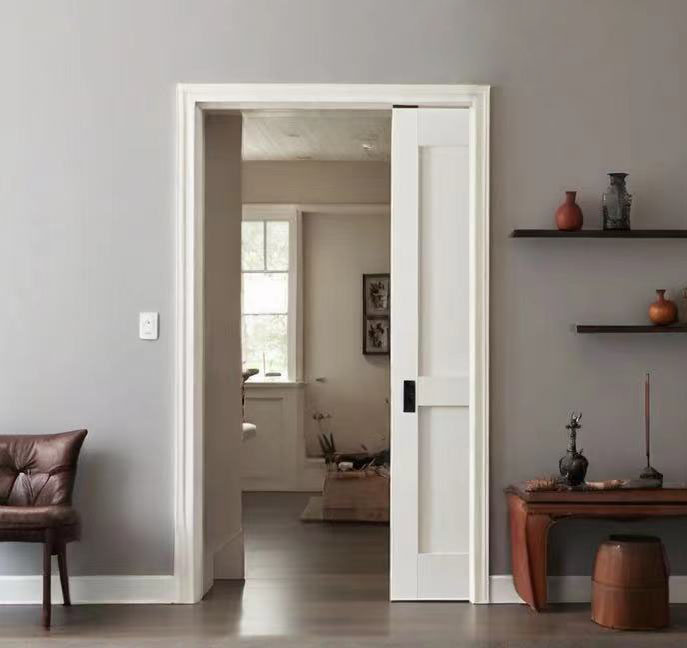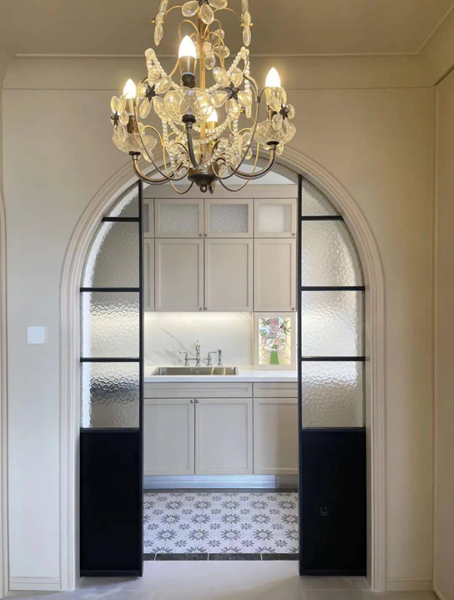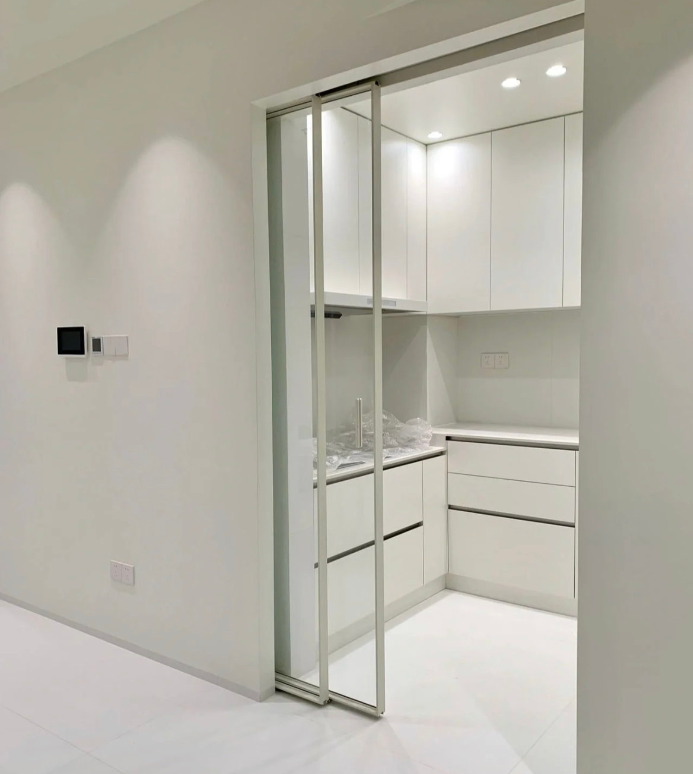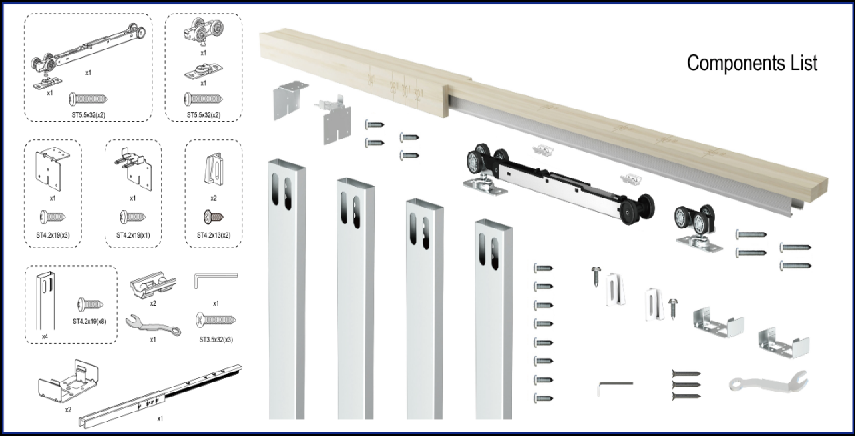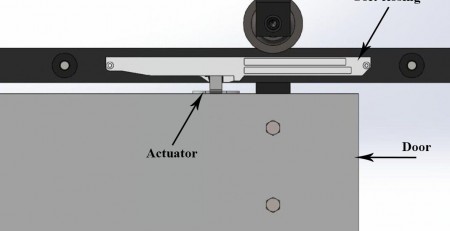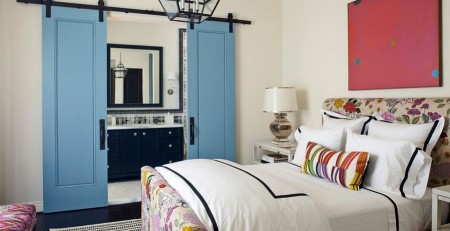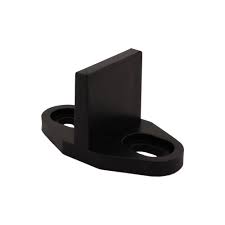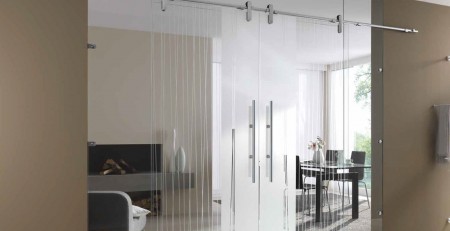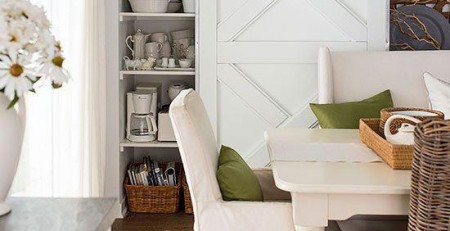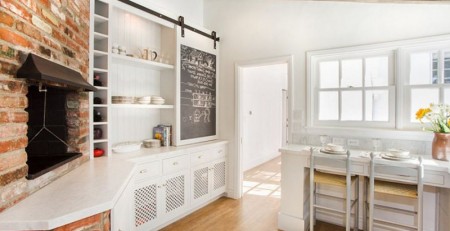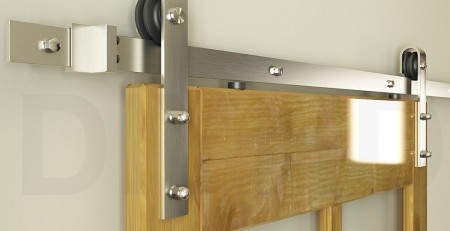A sliding pocket door functions by retracting into a recess within the wall, leaving the floor space unobstructed. Unlike conventional sliding doors that remain visible when open, pocket doors vanish from sight. This innovative design not only conserves space but also preserves the wall’s integrity, unlike surface-mounted sliding doors.
There are 7 types of pocket door hardware kits as below:
1. Single Pocket Frame
A single pocket door frame kit supports and accommodates a solitary door, fitting snugly into the wall’s recessed compartment. It’s ideal for smaller openings like bathrooms, pantries, or utility areas, freeing up valuable floor space without sacrificing aesthetics.
2. Double Attached Pockets
Designed for wider openings, a double pocket door frame accommodates two doors, each sliding into its pocket within the wall. Perfect for spaces like living rooms or bedrooms, these frames offer versatility without compromising on style or functionality.
3. Triple Pocket Frame
For exceptionally wide openings, triple pocket door frames are available, allowing for the installation of three doors that slide into separate pockets within the wall. These frames provide even greater flexibility and accessibility in expansive areas such as conference rooms or grand entrances.
4. Lead Lined Pocket Frame (Single)
Lead-lined pocket frames are handed to accommodate the lead placement on one side of the wall. Specify the handedness and the side for lead lining to ensure proper installation and radiation protection.
5. Knocked Down Pocket Frame Details (Single and Double)
Supplied fully welded, the KD pocket frames are easily assembled. The single frame ships with the head and strike jamb loose, while the double frame ships with only the head loose, simplifying installation between double pockets.
6. Handicapped Accessible Pocket Frame
Crafted to meet accessibility standards, these frames offer a clear opening as required for handicapped access. Additionally, the doors extend from the pocket when fully open, allowing for easy installation of handicapped accessible pulls.
7. Bypass Pocket Door Frame
Tailored for closets or storage areas, bypass pocket door frames enable multiple panels to slide past each other within the wall space, ensuring efficient utilization of available space.
Pocket door frames are essential structural components designed to support the installation of pocket doors. Comprising horizontal beams, vertical supports, and a track system, these frames ensure seamless door operation while maximizing space utilization. They are versatile solutions suitable for various settings, from residential to commercial, where space-saving and aesthetic considerations are paramount.
Typically, these frameworks comprise:
Head: A level crossbeam placed atop the aperture, sustaining the structure’s weight and ensuring steadiness.
Pocket door jamb kit: Vertical components affixed to the aperture’s flanks, serving as door guides and offering structural reinforcement.
Pocket door bottom guides: A level beam affixed at the aperture’s base, providing support for the door and aiding in its alignment.
Pocket door tracks and rollers: A sequence of tracks or grooves embedded within the framework, facilitating seamless door movement in and out of the recess.
Soft Closer: A soft closer installed on a pocket door serves the purpose of controlling the door’s closing motion to be slow and smooth. When installed on a Pocket Door, it ensures that the door closes gradually instead of abruptly, providing a more comfortable and quiet closing experience. Typically controlled by hydraulic or pneumatic systems, this device prevents the door from slamming shut, reducing wear on the door frame and panel, and minimizing the risk of pinching injuries.
Pocket door frameworks are available in diverse dimensions to accommodate varying door sizes and wall thicknesses. Typically integrated during a building’s construction or renovation, they necessitate alterations to the wall structure. These frameworks are particularly favored in settings prioritizing space conservation or aesthetic appeals, such as compact rooms or areas with limited swing space.

